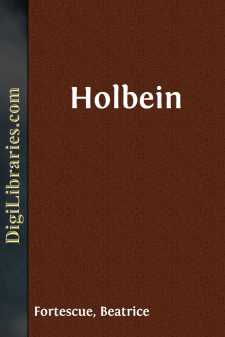Categories
- Antiques & Collectibles 13
- Architecture 36
- Art 48
- Bibles 22
- Biography & Autobiography 813
- Body, Mind & Spirit 142
- Business & Economics 28
- Children's Books 15
- Children's Fiction 12
- Computers 4
- Cooking 94
- Crafts & Hobbies 4
- Drama 346
- Education 46
- Family & Relationships 57
- Fiction 11828
- Games 19
- Gardening 17
- Health & Fitness 34
- History 1377
- House & Home 1
- Humor 147
- Juvenile Fiction 1873
- Juvenile Nonfiction 202
- Language Arts & Disciplines 88
- Law 16
- Literary Collections 686
- Literary Criticism 179
- Mathematics 13
- Medical 41
- Music 40
- Nature 179
- Non-Classifiable 1768
- Performing Arts 7
- Periodicals 1453
- Philosophy 64
- Photography 2
- Poetry 896
- Political Science 203
- Psychology 42
- Reference 154
- Religion 513
- Science 126
- Self-Help 84
- Social Science 81
- Sports & Recreation 34
- Study Aids 3
- Technology & Engineering 59
- Transportation 23
- Travel 463
- True Crime 29
Holbein
Categories:
Description:
Excerpt
CHAPTER I
HOLBEIN'S PERIOD, PARENTAGE, AND
EARLY WORK
The eighty-three years stretching from 1461 to 1543—between the probable year of the elder Hans Holbein's birth and that in which the younger, the great Holbein, died—constitute one of those periods which rightly deserve the much-abused name of an Epoch. The Christian era of itself had known many: the Yellow-Danger of the fifth century making one hideous smear across Europe; the Hic Jacet with which this same century entombed an Empire three continents could not content; the new impulse which Charlemagne and Alfred had given to Progress in the ninth century; the triumphant establishment of Papal Supremacy, that Napoleonic idea of Gregory VII.—Sanctus Satanas, of the eleventh, and grand architect in a vaster Roman Empire which still "humanly contends for glory"; and lastly, at the very threshold of the Holbeins, the invention of movable printing types about 1440, and the fall of Constantinople in 1453, which combined to drive the prodigies and potencies of Greek genius through the world.
Each of these had done its own special work for the advancement of man—as for that matter all things must, whether by help or helplessness. Not less than Elijah did the wretched priests of Baal serve those slow, sure, eternal Purposes, which include an Ahab and all the futile fury of his little life as the sun includes its "spots."
But although the stream of History is one, and its every succeeding curve only an expansion of the first, there has probably been no century of our era when this stream has been so suddenly enlarged, or bent so sharply toward fresh constellations as in that of the Holbeins,—when Religion and Art, as well as Science, saw a New World upon its astonished horizon. So that we properly call it a transition period, and its representative men "transitional."
Yet we shall never get near to these real men, to their real world, unless we can forget all about the pose of this or the other Zeitgeist—that tale
Told by an idiot, full of sound and fury,
Signifying nothing.
For we must keep constantly in mind that what we call the Middle Ages or—worse yet—the Dark Ages, made up the Yesterday of the Holbeins and was the flesh and blood transmitted to them as their own flesh and blood with all its living bonds toward the Old and all its living impulses toward the New.
A now famous New Zealander is, we know, to sketch our own "mediævalism" with contemptuous pity for its darkness. But until his day comes, our farthing-dips seem to make a gaudy illumination. And, meantime, we are alive; we walk about; we, too, can swell the chorus which the Initiated chant in every century with the same fond confidence: "We alone enjoy the Holy Light."
The New is ever becoming old; the old ever changing into New. And if we ask why each waxes or wanes just when it does and as it does, there is, in the last analysis, no better answer than Aurora's explanation for chancing on the poets—
Because the time was ripe.
And the Holbein century is one of stupendous Transitions because the time was ripe; and not simply because printing was invented, or Greek scholars were driven from Constantinople to scatter abroad in Europe, or Ferdinand and Isabella wanted a direct route to Cathay, or Friar Martin nailed ninety-five Theses to the door of Wittenberg's church, and built himself thereby an everlasting name as Luther....


